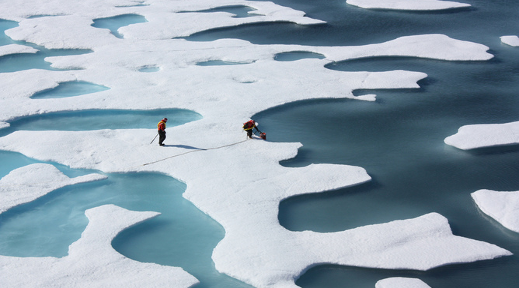How will global temperatures evolve over the next 20 years? The IPCC AR5 made an assessment that average global temperatures in the 2016-2035 period would likely be 0.3 – 0.7°C above the 1986-2005 average. Some climate scientists disagree with that assessment. Continue reading Near-term global temperature forecasts
Category Archives: IPCC AR5
Information Tribunal decides on the IPCC Zero-Order Drafts
On 1 May 2015, the UK’s First-Tier Tribunal unanimously dismissed David Holland’s appeal for copies of the Zero-Order Draft (ZOD) of the IPCC’s Fourth Assessment Report (AR4) made under Freedom of Information legislation. Their decision is available here. They considered Holland’s appeal to be “entirely without merit”.
Guest post by Tim Osborn, University of East Anglia (UEA)
Note that this post is slightly outside the usual topics discussed on this blog, but it is relevant to the climate science community. The Comments will be moderated. – Ed
Continue reading Information Tribunal decides on the IPCC Zero-Order Drafts
Hiatus delays unprecedented warming rates
Current global temperatures are often discussed in terms of their unprecedented nature when compared to the last few thousand years. An interesting paper in Nature Climate Change by Steven J Smith and colleagues examines the rate of warming projected by the CMIP5 ensemble and suggests that the rate of warming is unprecedented also. However, we note here that their projections are not constrained by the current observations which do not show such strong warming rates at present, and are unlikely to do so in the next few years. Continue reading Hiatus delays unprecedented warming rates

Arctic sea-ice decline erratic as expected
Imagine a ball bouncing down a bumpy hill. Gravity will ensure that the ball will head downwards. But, if the ball hits a bump at a certain angle it might move horizontally or even upwards for a time, before resuming its inevitable downward trajectory. This bouncing ball is an analogy for the behaviour of Arctic sea-ice.
Post based on Swart et al., Nature Climate Change, or see a less technical summary. Continue reading Arctic sea-ice decline erratic as expected
Uncertainties in the timing of unprecedented climates
Back in October 2013, Nature published an analysis by Camilo Mora et al. which discussed when ‘unprecedented climates’ would emerge, with a focus on regions of high biodiversity.
The paper was highlighted by Nature with an associated News & Views article and received widespread media attention (e.g. Climate Central, National Geographic, Guardian, Grist, amongst many). The paper was also in the top 100 most discussed papers from 2013 according to Altmetric.
Unfortunately, it has since emerged that the analysis has some serious flaws. A ‘Brief Communication Arising’ (or Comment) has now been published by Hawkins et al. in Nature (freely available for one month), written by a large group which includes several IPCC Lead Authors, from both WG1 and WG2. There is also a ‘Reply’ from Mora et al., and a new News & Views (N&V) piece by Scott Power discussing the continuing disagreement between the author teams. This is the first ever N&V on a Comment in Nature.
This post provides a slightly less technical description of the issues with Mora et al.’s analysis. The errors in Mora et al.’s Reply are summarised in a separate post. The Carbon Brief blog has also produced some videos on the topic. Continue reading Uncertainties in the timing of unprecedented climates
Comments on the GWPF climate sensitivity report
Guest post by Piers Forster, with comments from Jonathan Gregory & Ed Hawkins
Lewis & Crok have circulated a report, published by the Global Warming Policy Foundation (GWPF), criticising the assessment of equilibrium climate sensitivity (ECS) and transient climate response (TCR) in both the AR4 and AR5 IPCC assessment reports.
Climate sensitivity remains an uncertain quantity. Nevertheless, employing the best estimates suggested by Lewis & Crok, further and significant warming is still expected out to 2100, to around 3°C above pre-industrial climate, if we continue along a business-as-usual emissions scenario (RCP 8.5), with continued warming thereafter. However, there is evidence that the methods used by Lewis & Crok result in an underestimate of projected warming. Continue reading Comments on the GWPF climate sensitivity report
Updates to comparison of CMIP5 models & observations
As 2013 is nearly over, it is time for a short update to the comparisons of CMIP5 models and observations for global mean surface air temperatures. Part of the motivation for an update is the Cowtan & Way paper on spatial coverage biases in HadCRUT4, which has been given prominent attention in blogs and the media, notably the front page of The Independent. Continue reading Updates to comparison of CMIP5 models & observations
Sources of uncertainty in CMIP5 projections
The recent IPCC AR5 includes a discussion on the sources of uncertainty in climate projections (Fig. 11.8, section 11.3.1.1), which updates previous analyses using CMIP3 (temperature, precipitation) to the latest CMIP5 simulations. The dominant source of uncertainty depends on lead time, variable and spatial scale. Continue reading Sources of uncertainty in CMIP5 projections